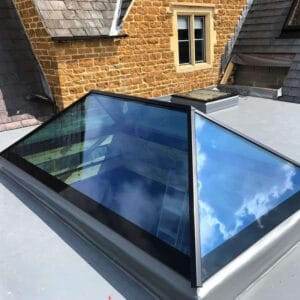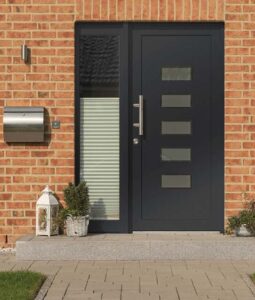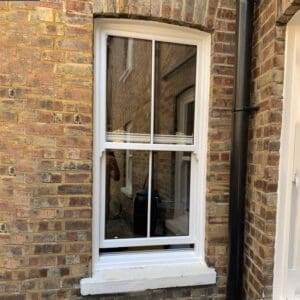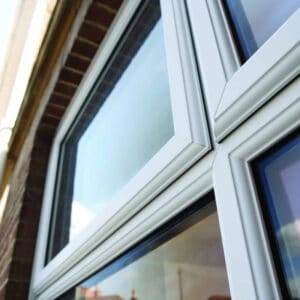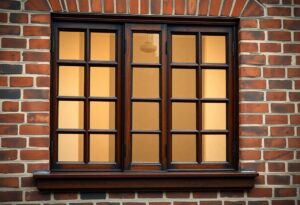Are you considering painting your aluminium windows to give them a fresh new look? Before you begin, it’s important to understand the techniques and tips that will ensure a successful outcome. Not only does painting your aluminium windows improve their appearance, but it also provides an extra layer of protection against corrosion and weathering. In this blog post, we will explore the art of painting aluminium windows and provide you with expert advice on how to achieve a professional finish.
Key Takeaways:
- Proper Surface Preparation: Ensure the aluminium windows are thoroughly cleaned and sanded before applying any paint to achieve the best adhesion and finish.
- Use High-Quality Paints and Primer: Invest in high-quality, weather-resistant paints and primers specifically designed for metal surfaces to ensure long-lasting results.
- Apply Thin and Even Coats: When painting aluminium windows, apply thin and even coats to avoid drips and runs, and work in a well-ventilated area to ensure proper drying.
Preparing the Surface
Before you start painting your aluminium windows, it is crucial to properly prepare the surface to ensure a smooth and long-lasting finish. This involves a few key steps to ensure that the paint adheres well and the final result looks professional.
Cleaning Techniques for Aluminium Windows
First, you need to thoroughly clean the surface of the aluminium windows. This is important to remove any dirt, grease, or other contaminants that may affect the adhesion of the paint. You can use a mild detergent and water solution to wash the windows, followed by a rinse with clean water. Alternatively, you may opt for a specialised aluminium cleaner to ensure a completely clean surface.
Sanding and Priming for Optimum Paint Adhesion
After cleaning, the next step is to sand the aluminium windows to create a rough surface for the paint to adhere to. Use a fine-grit sandpaper to lightly sand the windows, being careful not to sand too hard and damage the surface. Once the windows are sanded, it is essential to apply a suitable primer specifically designed for aluminium surfaces. The primer will enhance the adhesion of the paint and provide a smooth base for the topcoat. Make sure to allow the primer to dry completely before proceeding with the painting process.
Choosing the Right Paint and Tools
When it comes to painting aluminium windows, using the right paint and tools is crucial for achieving a professional and long-lasting finish. In this chapter, we will explore the selection of paint types suitable for aluminium surfaces as well as the essential painting tools required to achieve the best results.
Selection of Paint Types for Aluminium Surfaces
When selecting paint for aluminium surfaces, it is important to choose a product specifically designed for metal applications. Look for durable, weather-resistant paints that offer excellent adhesion to aluminium. Epoxy-based paints are a popular choice for aluminium windows and offer great corrosion resistance. The aluminium primer is also essential to ensure proper adhesion and protection. The table below summarises the different types of paint suitable for aluminium surfaces:
| Epoxy based paint | Provides excellent adhesion and corrosion resistance |
| Polyester-based paint | Good colour retention and UV resistance |
| Acrylic paint | Quick drying and cost-effective option |
| Fluoropolymer paint | Highly durable and resistant to environmental damage |
| Aluminium primer | Ensures proper adhesion and protection |
The selection of the right paint type is crucial to ensure the longevity and durability of the paint finish on your aluminium windows. The aluminium primer is particularly important to create a strong bond between the paint and the surface.
Essential Painting Tools for a Professional Finish
When painting aluminium windows, having the right tools is essential for achieving a professional finish. The most important tools include a high-quality paintbrush or roller, sandpaper for surface preparation, a putty knife for removing old caulk, and masking tape for clean and precise edges. Additionally, you will need cleaning solvents to remove any grease or dirt from the surface before painting. Having the right tools will make the painting process smoother and help you achieve a flawless result. Your safety is paramount when working with painting tools, so make sure to use them with caution and follow all safety guidelines.
Painting Techniques and Application
When it comes to painting aluminium windows, the right techniques and application are crucial for achieving a professional and long-lasting finish. In this chapter, we will discuss the best methods for preparing, priming, and painting aluminium windows to ensure a smooth and durable result.
Step-by-Step Guide to Painting Aluminium Windows
Preparing your aluminium windows for painting is the key to a successful outcome. Below is a simple step-by-step guide to help you achieve a flawless finish:
| Step 1 | Clean the windows thoroughly with a degreasing solution to remove any dirt, oil, or grime. |
| Step 2 | Apply a self-etching primer to promote adhesion and prevent corrosion. |
| Step 3 | Use a high-quality paint suitable for metal surfaces and apply it evenly with a brush or spray gun. |
Expert Tips for a Smooth and Durable Finish
For a successful painting project, there are some expert tips you should keep in mind:
- Preparation is key: Ensure the surface is clean, dry, and free of any defects before starting the painting process.
- Use the right tools: Invest in high-quality brushes, rollers, or spray equipment for a professional finish.
- Thoroughly prime the surface: Applying a primer specially formulated for aluminium will ensure better adhesion and durability.
Though painting aluminium windows may seem daunting, following these expert tips will help you achieve a smooth and durable finish that will stand the test of time.
Maintenance and Touch-Ups
When it comes to maintaining the paint on your aluminium windows, regular care and touch-ups are essential to ensure they remain in top condition. By following the right techniques and using the appropriate methods, you can keep your painted aluminium windows looking fresh and vibrant for years to come.
Protecting Your Painted Aluminium Windows
Properly protecting your painted aluminium windows is crucial in maintaining their appearance and functionality. Ensure that your windows are cleaned regularly with a mild detergent and soft cloth to remove any dirt or debris that may cause damage to the paint. Additionally, be mindful of any harsh chemicals or abrasive materials that could potentially scratch or damage the painted surface. Applying a clear sealant or wax coating can provide an extra layer of protection, helping to safeguard the paint from fading or peeling due to exposure to the elements.
Efficient Methods for Touch-Ups and Repairs
Over time, it’s inevitable that your painted aluminium windows may experience minor scratches or chips. When this happens, it’s important to address these blemishes promptly to prevent further deterioration. To efficiently carry out touch-ups and repairs, start by gently sanding the affected area to smooth out any rough edges. Then, apply a matching touch-up paint using a small brush, ensuring that the colour blends seamlessly with the existing paint. Finally, once the touch-up paint has dried, lightly buff the area with a soft cloth to restore a uniform finish. By utilising these efficient methods, you can easily maintain the quality of your painted aluminium windows and keep them looking as good as new.
Conclusion: The Art of Painting Aluminium Windows – Techniques and Tips
Ultimately, painting aluminium windows can be a challenging task, but with the right techniques and tips, you can achieve professional-looking results. Remember to thoroughly clean and prepare the surface before applying any paint, and consider using a primer specifically designed for metal surfaces. Take your time during the painting process, and apply thin, even coats to avoid drips or streaks. Additionally, don’t forget to consider the weather conditions when painting aluminium windows, as temperature and humidity can affect the drying and curing process. By following these tips and techniques, you can successfully paint your aluminium windows and give them a fresh, new look.
FAQ
Q: Why should I consider painting aluminium windows?
A: Painting aluminium windows can give them a fresh new look, provide added protection against corrosion, and allow you to customise the appearance to match your home’s style.
Q: What are some key techniques for preparing aluminium windows for painting?
A: Proper surface preparation is essential. This involves thoroughly cleaning the windows, removing any existing paint or corrosion, and ensuring the surface is smooth and free from contaminants.
Q: What type of paint should I use for painting aluminium windows?
A: It’s important to use a high-quality paint that is specifically designed for use on metal surfaces, such as an acrylic or epoxy-based paint. This will ensure good adhesion and long-lasting results.
Q: How should I apply the paint to the aluminium windows?
A: The paint can be applied using a brush, roller, or spray gun, depending on the size and design of the windows. It’s important to apply thin, even coats and allow sufficient drying time between coats.
Q: What are some tips for achieving a professional finish when painting aluminium windows?
A: To achieve a smooth and flawless finish, take your time with the preparation and application process. Ensure the area is well-ventilated and free from dust or debris that could affect the finish.
Q: How can I maintain the painted aluminium windows over time?
A: Regular cleaning and inspection can help maintain the appearance and integrity of the painted finish. Touching up any areas of wear or damage promptly can also prevent further deterioration.
Q: Are there any specific maintenance considerations for painted aluminium windows in different climates?
A: In harsh or coastal environments, it may be necessary to inspect and touch up the paint more frequently to protect against the elements. Using a durable, weather-resistant paint can also help prolong the life of the finish.

